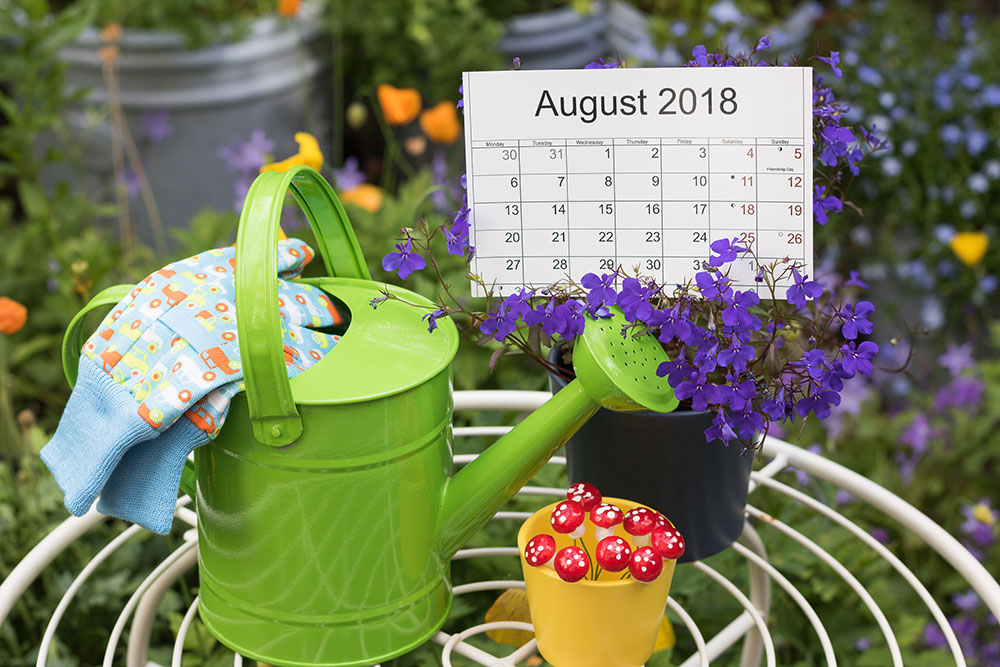
As August ushers in the transition from summer to fall, it’s time to focus on key tasks that will set your garden up for success. Here are five essential items every gardener should add to their August to-do list.
1. Plan and Plant Cool-Weather Annuals and Perennials
August is the perfect time to start planning your fall garden. Take a close look at your garden beds—do some areas shine in spring and summer but lack color in the fall? Add vibrant fall-blooming plants to these spots.
If you’re starting from seeds, now is the time to sow cool-weather annuals like pansies, violas, and snapdragons. Not into seed planting? No problem! By late August, Meadows Farms will have a wide selection of garden mums, asters, ornamental cabbage and kale, and pansies (weather permitting). In the meantime, clear out weeds and trim overgrown plants to prepare your beds.
2. Prep for Cool-Season Vegetables
Begin your preparations now for a cool-season vegetable garden. Pull out failing or under-performing summer vegetables to make room for new additions. Your spring and summer vegetables take up a lot of your soil and can leave it depleted of valuable nutrients needed by your new fall crops.
Be sure to amend any soil with a fresh batch of rich compost such as Meadows Farms Compost Manure, Just Natural Garden Soil, or Black Kow Manure. A mixture of Espoma Biotone Starter Plus in the soil will help get roots established faster, leading to more productive crops.
3. Divide and Transplant Perennials
Dividing perennials such as iris, peonies, daylilies, and summer phlox is a great way to fill empty garden spaces without buying new plants. The division also encourages healthier root growth and more vigorous blooms in the future.
To divide perennials, gently lift the plant with a garden fork, remove excess soil, and split the root ball into two sections. Replant each section with Espoma Biotone Starter Plus for optimal root development, and water thoroughly.
4. Stay Ahead of Pests and Diseases
August brings its share of pests and diseases, so vigilance is key. As Japanese beetles disappear, their larvae (grubs) can damage your lawn. Apply grub control products like Bayer Advanced Season Long Grub Control or Milky Spore to protect your grass.
If you notice a black, sooty substance on your hollies or evergreens, it’s likely caused by pests like aphids or scale. Treat with an insecticide to clear the infestation, and the sooty mold will wash away over time.
Powdery mildew is another common August issue, appearing as a white powdery coating on leaves. Prevent mildew by pruning affected areas, clearing plant debris, and applying a fungicide.
5. Prepare Your Lawn for Fall
The heat of August can be tough on lawns. Keep mower blades set to remove no more than one-third of the grass height to minimize stress. For a head start on fall lawn care, consider aerating your lawn. Aeration improves drainage and allows water and nutrients to reach the roots more effectively.
You can rent lawn aeration equipment or hire Meadows Farms Ground Maintenance for professional aeration services.
Partner with Meadows Farms for Expert Gardening Help
With 15+ locations across Virginia, West Virginia, Maryland, and Washington D.C., Meadows Farms is your trusted neighborhood garden center. Our expert team is here to help with all your landscaping, lawn care, and gardening needs. Whether you’re planning a new project or tackling fall maintenance, visit us today and let us help bring your garden to life!


How much for arborvitaes? Do u have any yet?
Yes, we do have arborvitaes in stock. They range in price based on size and variety, so I can’t give you an accurate price here. I would contact your local Meadows Farms location and they can let you know what types they have in stock and their current retail price.